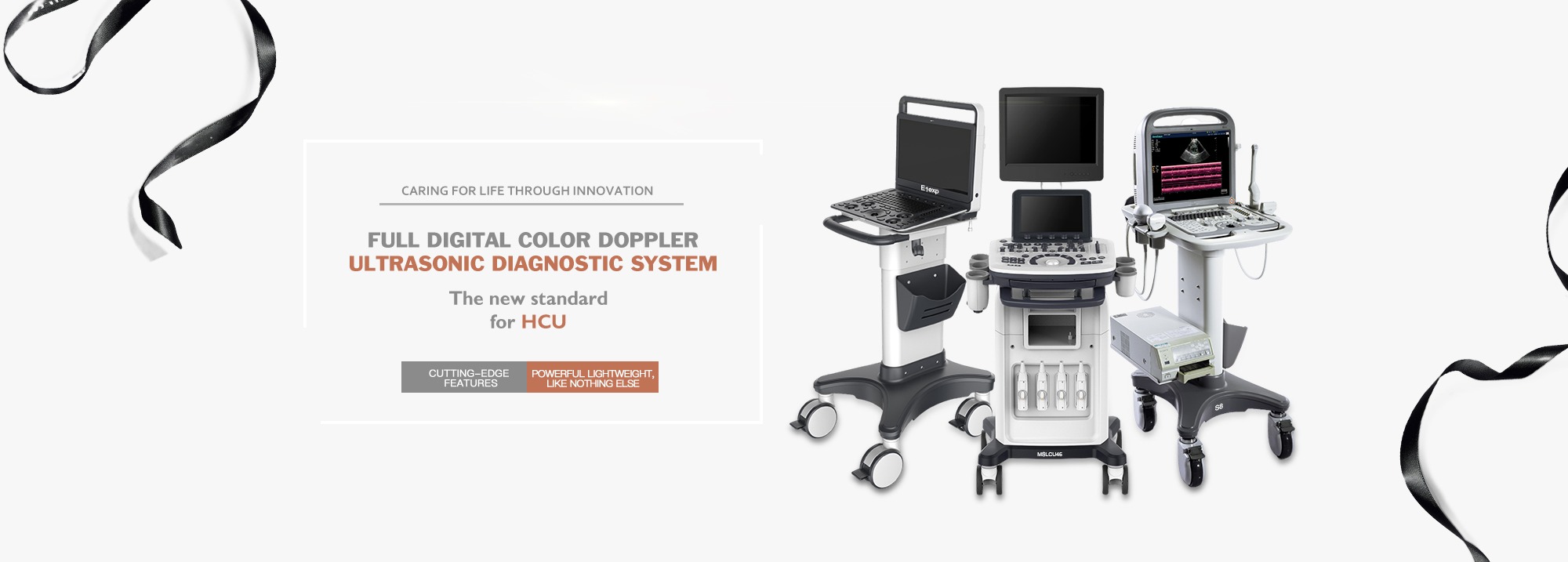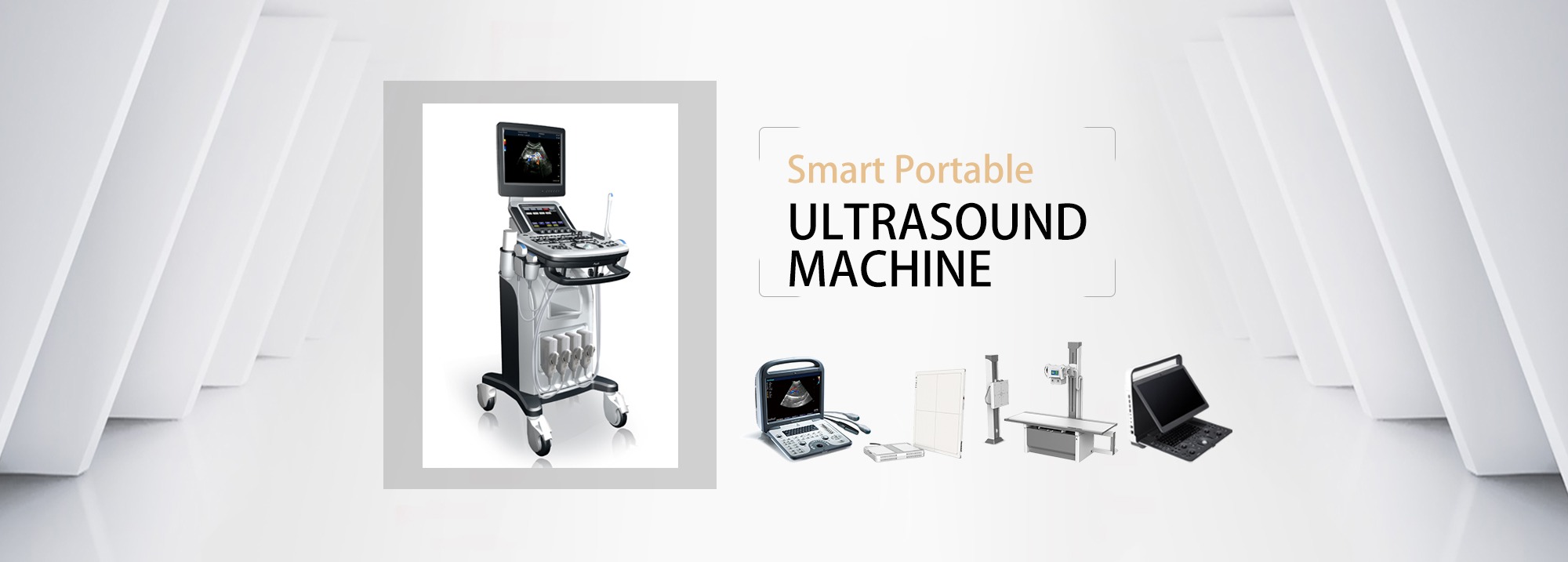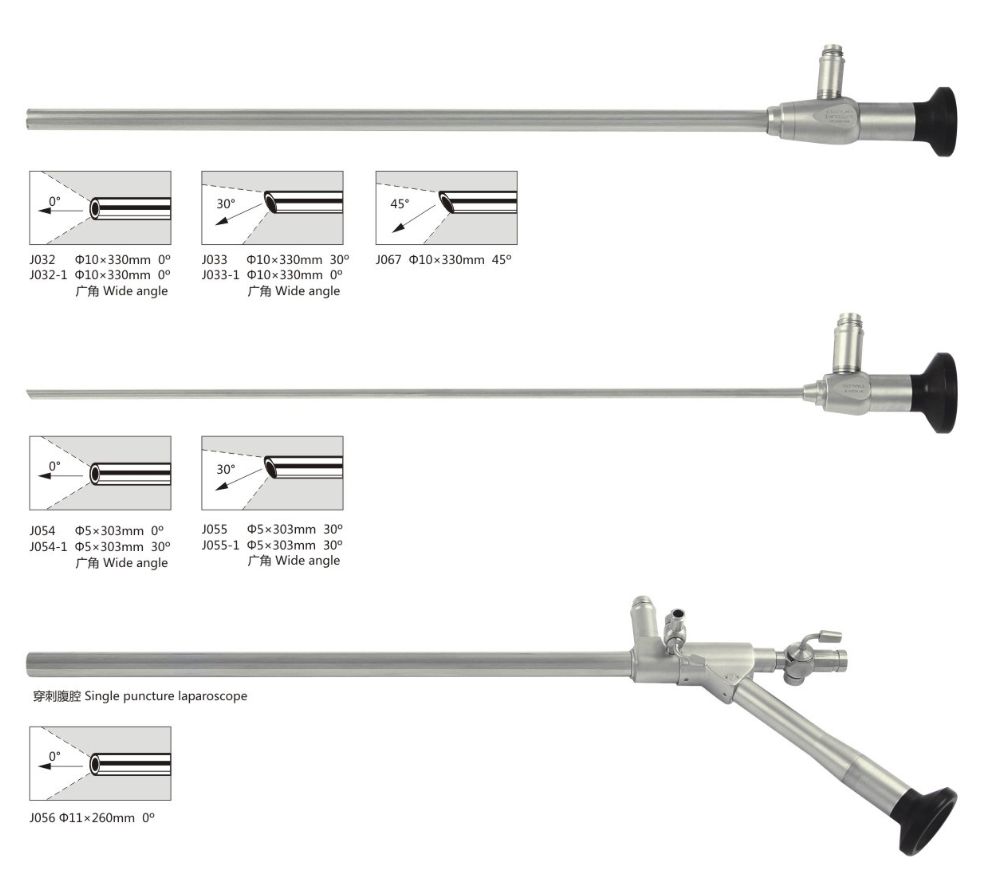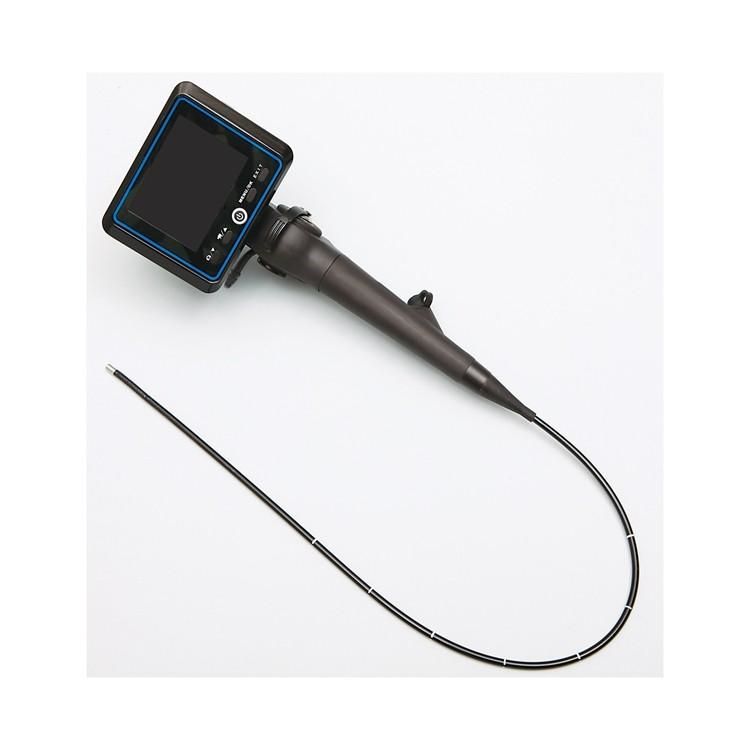Medical endoscopes
Since its advent in the 19th century, medical endoscope has been continuously developed, and now it has been applied to general surgery, urology, gastroenterology, respiratory, orthopedics, ENT, gynecology and other departments, and has become one of the most commonly used medical instruments in modern medicine.
In recent years, 4K, 3D, disposable technology, special light (such as fluorescence) imaging technology, ultra-fine medical endoscopy technology, big data, artificial intelligence and other technologies have developed rapidly, and have been applied to the field of endoscopy. The entire endoscopic industry pattern is being subverted and reshaped by technology, policy, clinical and other factors.
Endoscopic classification
1.Rigid endoscopes
rigid endoscopes can be divided into laparoscopic, thoracoscopic, hysteroscopic and other categories. Various types of rigid endoscopees are used together with supporting equipment to complete the diagnosis and treatment of various types of diseases. The main supporting equipment of the rigid endoscope is the camera system host, camera, cold light source, monitor, car and so on. The rigid endoscope mainly enters the sterile tissue and organ of the human body or enters the sterile chamber of the human body through surgical incision, such as laparoscopy, thoracoscope, arthroscopy, disc endoscopy, ventriculoscopy, etc. The rigid endoscope is a prism optical system, the biggest advantage is that the imaging is clear, can be equipped with multiple working channels, select multiple angles.
2.Fiber endoscopes
Fiber endoscopes mainly through the natural cavity of the human body to complete the examination, diagnosis and treatment, such as gastroscope, colonoscope, laryngoscope, bronchoscope and other mainly through the digestive tract, respiratory tract and urinary tract into the human body. The optical system of the fiber endoscopes is the optical guide fiber optical system. The biggest feature of this optical fiber endoscope is that the endoscope part can be manipulated by the surgeon to change the direction and expand the scope of application, but the imaging effect is not as good as the rigid endoscope effect. fiber endoscopes have been applied in gastroenterology, respiratory medicine, otolaryngology, urology, proctology, thoracic surgery, gynecology and other departments, from simple disease screening to complex achalasia treatment, bringing patients timely and accurate diagnosis and treatment, low risk, less surgical trauma and quick postoperative recovery benefits.
Endoscope market size
With the policy, enterprise, technology, patient needs and other factors driven, China's endoscopic industry is accelerating development. In 2019, China's endoscope market size was 22.5 billion yuan, and is expected to grow to 42.3 billion yuan in 2024. According to the "China Endoscope Market Size and Forecast 2015-2024", the proportion of China's endoscope market in the global market continues to rise. In 2015, China's endoscopic equipment market accounted for 12.7% of the global proportion, in 2019 accounted for 16.1%, is expected to increase to 22.7% in 2024. On the other hand, China, as a large country with a population of 1.4 billion, is one of the fastest growing countries in the endoscope market, and the market growth rate is much higher than the average growth rate of the global market. From 2015 to 2019, the global endoscope market grew at a CAGR of only 5.4%, while the Chinese endoscope market grew at a CAGR of 14.5% during the same period. The huge market space and high-speed growth market have brought development opportunities for domestic endoscope enterprises. But at present, the domestic endoscope field is still occupied by multinational giants in the main market. rigid endoscope and fiber endoscope head enterprises in Germany, Japan, the United States, of which Germany concentrated more rigid endoscope representative enterprises, such as rigid endoscope leader Carl Stoss, German Wolf brand, etc., fiber endoscope representative enterprises Olympus, Fuji, Pentax are from Japan, Stryker is from the United States rigid endoscope company representative.
Endoscope domestic substitute
In 2021, in the "Medical Equipment Industry Development Plan (2021-2025)", the Ministry of Industry and Information Technology made a detailed plan for the key development and breakthrough direction of medical equipment, which includes the strategic goal of focusing on breaking through imaging diagnostic equipment such as medical endoscopes.
At the same time, the National Ministry of Finance and the Ministry of Industry and Information Technology jointly issued the "Government Procurement Import Product Audit Guidelines" (2021 version) notice, clearly stipulates that 137 kinds of medical devices all require 100% domestic procurement; 12 kinds of medical devices require 75% purchase domestic; 24 kinds of medical devices require 50% purchase of domestic; Five kinds of medical devices require 25% to be purchased domestically. In addition to the provincial documents, including Guangzhou, Hangzhou and other places have also released more detailed documents to help domestic equipment open the market. For example, in March 2021, the Guangdong Health Commission announced the purchase list of imported products for public medical institutions, which stipulates that the number of imported medical devices that government agencies and public hospitals can purchase has been reduced from 132 in 2019 to 46, of which eight medical rigid endoscopes such as hysteroscopes, laparoscopes and arthroscopes have been eliminated, and domestic brands will be given priority to purchase. Subsequently, a number of local governments issued specific policies to encourage the purchase of domestic brands of medical devices. The introduction of the high-frequency + multidimensional policy has promoted the accelerated listing of domestic endoscopes and import substitution.
Sullivan predicts the rapid development of domestic endoscopes in the next 10 years, the scale of domestic endoscopes in 2020 will be 1.3 billion yuan, and the localization rate is only 5.6%, and it is expected that the market size of domestic endoscopes will be rapidly increased to 17.3 billion yuan in 2030, with a 10-year CAGR of 29.5% to achieve a localization rate of nearly 28%.
Endoscopic development trends
1.Ultrasonic endoscope
Ultrasonic endoscope is a digestive tract examination technology combining endoscopy and ultrasound. A miniature high-frequency ultrasonic probe is placed at the top of the endoscope. When the endoscope is inserted into the body cavity, the gastrointestinal mucosal lesions can be directly observed by the endoscope while real-time ultrasound scanning under endoscopic ultrasound can be used to obtain the histological characteristics of the gastrointestinal hierarchy and ultrasound images of the surrounding organs. And assisted polyp excision, mucosal dissection, endoscopic tunnel technology, etc., to further improve the diagnosis and treatment level of endoscopy and ultrasound. In addition to the examination function, endoscopic ultrasound has the therapeutic functions of accurate puncture and drainage, which greatly expands the clinical application range of endoscopy and makes up for the shortcomings of conventional endoscopy.
2.Disposable endoscope
The traditional repetitive use of endoscopes due to the complex structure, so in the disinfection and cleaning can not be completely thorough, microbes, secretions and blood remains easy to produce cross-infection, and cleaning, drying, disinfection will greatly increase the hospital operating costs, in addition to the use of cleaning, cleaning, disinfection are easy to damage the endoscope, resulting in high maintenance costs... All these have caused the limitations of repeated use of endoscopes in clinical use, so one-time use of endoscopes has naturally become a major trend in the development of endoscopes.
Disposable consumable endoscopes avoid the risk of cross infection; Reduce hospital procurement costs; No need to sterilize, dry, reduce operating costs; There is no disinfection, maintenance and other links, can realize the operation table, improve efficiency.
3.Intelligent and AI-assisted diagnosis and treatment
With the continuous development of computer, big data, precision instruments and other industries as well as the continuous progress of medical technology, endoscopy technology is being integrated with other emerging technologies, resulting in endoscopy products with more powerful additional functions, such as 3D fiber endoscopy, which can improve the detailed perception of the body tissues and organs of the clinician. The AI diagnosis system with computer-aided recognition can improve the sensitivity and specificity of diagnosis on the basis of doctors' experience to ensure the accuracy of diagnosis. With the precise and stable characteristics of robot action, endoscopic surgery can be more safe, accurate and convenient, and greatly reduce the labor intensity of medical personnel.
Post time: Dec-08-2023











